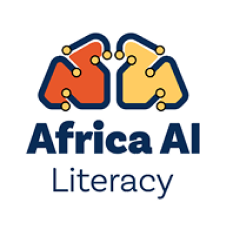In this lesson, you’ll continue exploring how AI tools work and the role of AI models trained on data. You’ll learn more about generative AI for creating new content and AI tools that understand natural language. Then, you’ll experience an AI tool firsthand as you consider creative ways to apply it in your practice. Get ready to unlock the potential of AI for education!
Generative AI and its applications
AI tools
Now that you understand more about how models make AI tools possible, it’s time to delve into AI tools. You’ve learned that conversational AI is a type of AI that can understand human language requests and generate responses in a meaningful way. Conversational AI tools are useful because they understand natural language — the way people talk or write when communicating with each other. This means they can process human language requests and generate responses in a meaningful way, respond to common conversational cues, interpret certain colloquialisms, adapt to particular conversational contexts, and engage in natural conversations. However, note that AI may encounter problems when trying to understand more complex aspects of human language, such as emotions, cultural references and nuances, and sarcasm and irony.
If you type in a prompt field, “Debate the pros and cons of …”
Depending on what the LLM has learned from your search history, some predictions could be …
- cat versus dogs
- tennis versus pickleball
- TV shows versus movies
Or perhaps you type, “The difference between …”
In this case, the LLM could predict that you want to learn about the difference between …
- mean and median
- mitosis and meiosis
- affect and effect
Understanding how LLMs predict word sequences will help you navigate conversational AI tools more effectively because you can adjust your prompts to get the most relevant responses.
Begin using AI
Now that you’ve learned about LLMs, it’s time to witness one in action. Here’s an example using Gemini. This prompt asks for a simple explanation of genAI for middle school teachers that includes relatable music analogies. Then, Gemini generates an output fulfilling the request. Check out the response:
Now you try it
It’s time to start your own conversation! As you do, you’ll follow these steps. Feel free to copy and paste them into a document or save them another way so you can refer to them anytime:
Use AI to help you prepare for a trip
Continue your practice and prompt an AI tool to help you prepare for a trip. For example, you could type:
Again, feel free to keep the conversation going until you’ve planned the perfect getaway! You can change up your favorite vacation activity, destination, and much more.
As you continue using AI tools for education, there are a few things to keep in mind: First, it’s possible for these tools to arrive at incorrect answers to math problems, to attribute quotes or work to the wrong person, and to provide erroneous information — especially about recent events, as there’s not enough training data available yet. Likewise, different AI tools have different functionalities. Therefore, they will respond to prompts in their own unique ways. As these tools improve, they should produce stronger results over time.
Continue practicing writing and refining your instructions in order to translate them into creative and helpful outputs. Remember, there’s no substitute for the human touch; so always use your expert eye to ensure the results are effective and appropriate.







